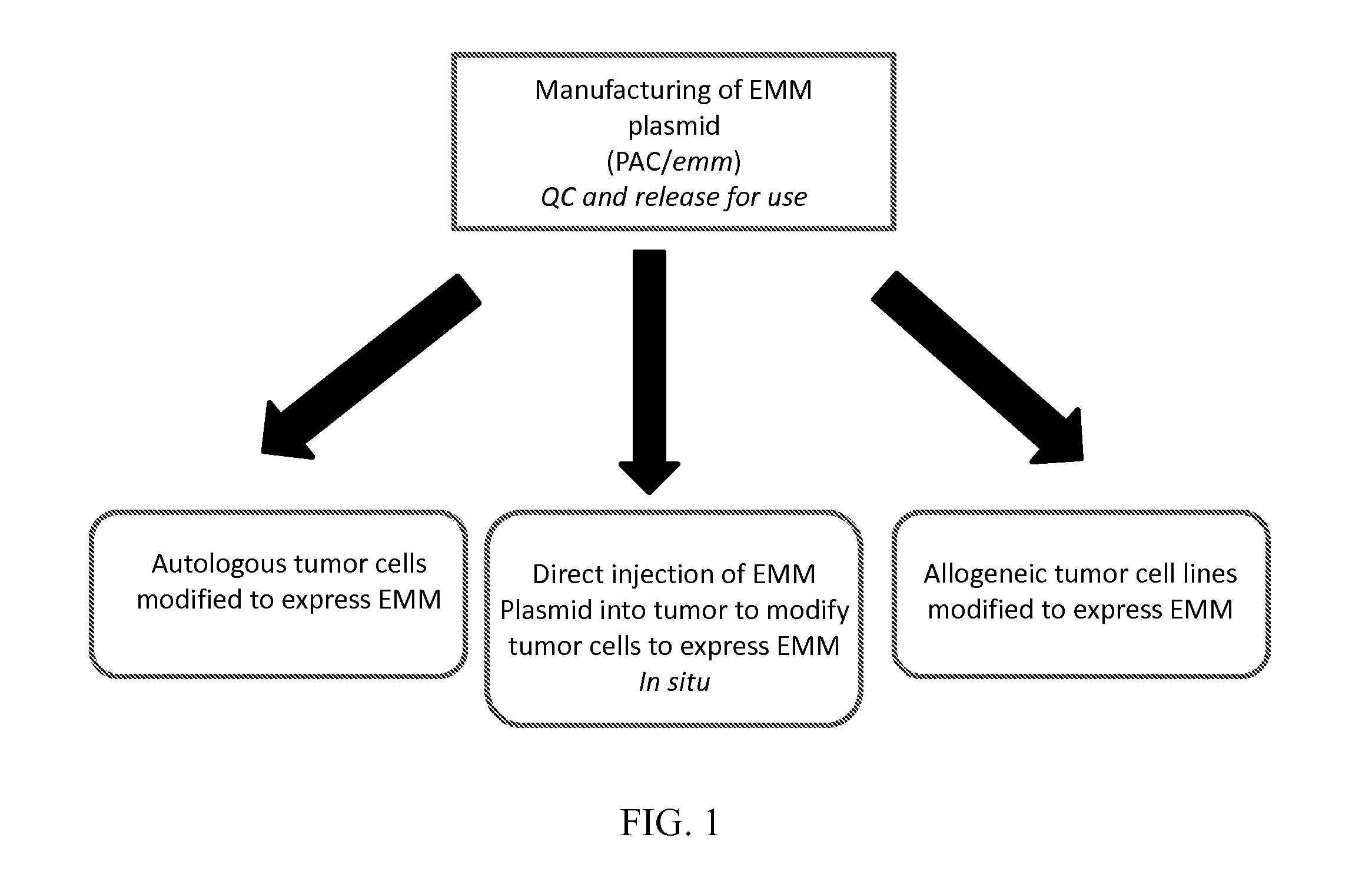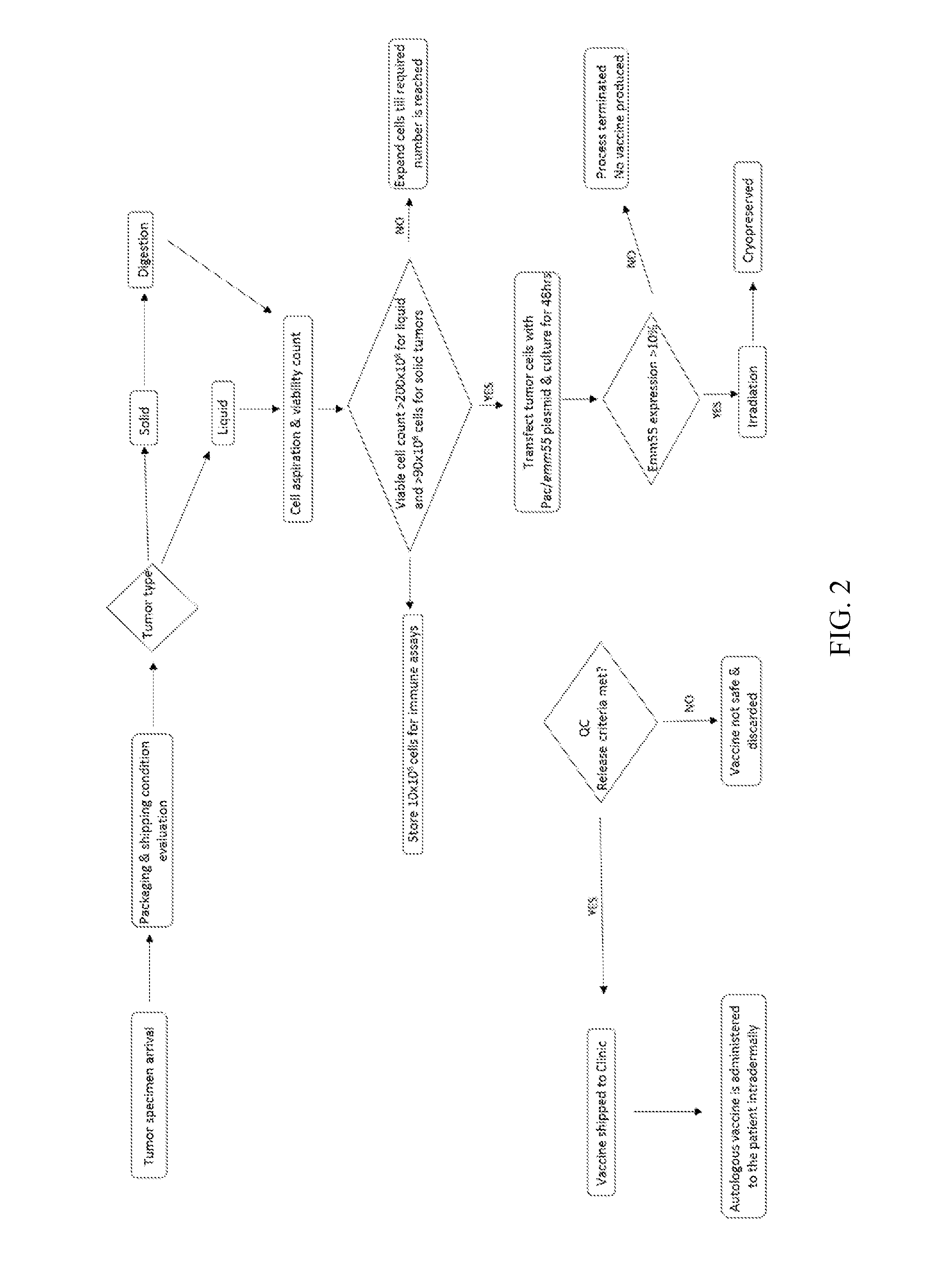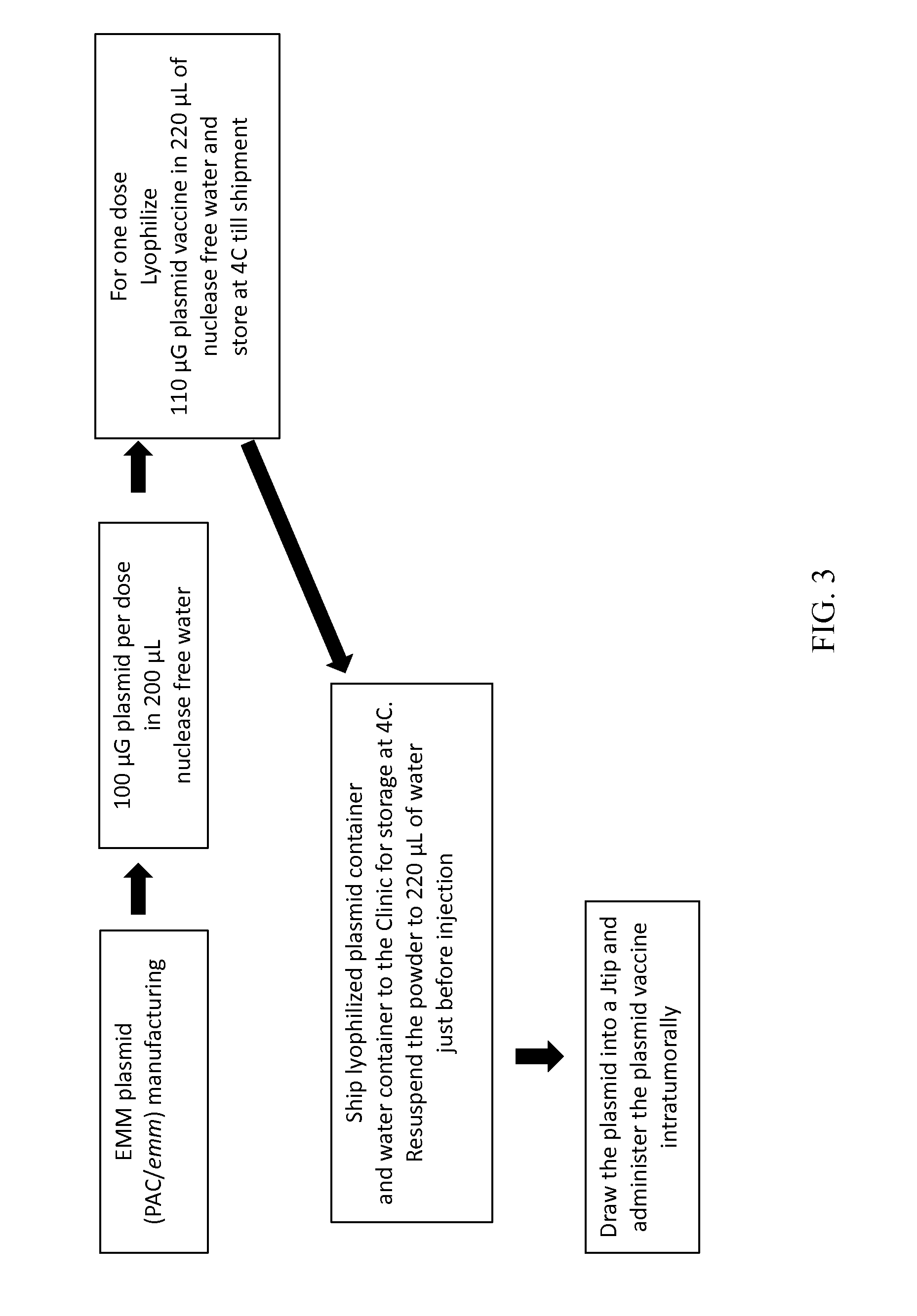DNA vector and transformed tumor cell vaccines
a technology of transformed tumor cells and dna vectors, applied in the field of therapeutic dna vector vaccines, can solve the problem of limited identification of these antigens, and achieve the effect of stimulating immunogenic responses
- Summary
- Abstract
- Description
- Claims
- Application Information
AI Technical Summary
Benefits of technology
Problems solved by technology
Method used
Image
Examples
example 1
Emm Transfected Lymphoma Cells as Vaccines
[0068]This example illustrates use of an Emm autologous whole tumor cell vaccine. The vaccine was prepared from tumor cells isolated from a canine lymphoma patient. The cells were then modified / transformed in vitro with a pAc / emm plasmid DNA before formulation into a vaccine composition and used for treatment.
[0069]A 6 year old intact male German Shepherd, was diagnosed with canine lymphoma in late March 2012. He first presented with generalized lymphadenopathy; and the lymphoma diagnosis was confirmed via fine needle aspirates of the prescapular lymph nodes. Due to an intolerance of prednisolone and other traditional medications, the owner elected autologous vaccine therapy. In late April 2012, a prescapular lymph node was surgically removed and submitted for histopathology and autologous vaccine preparation. The histopathology results indicated high grade lymphosarcoma with a guarded prognosis for survival. From the remaining lymph node ti...
example 2
In Vivo Emm DNA Vector Delivery into a Solid Tumor
[0075]In contrast to the whole cell Emm vaccine in Example 1, an emm plasmid was delivered intratumorally in this example. This type of therapeutic DNA vector vaccine is applicable in multiple types of cancers to induce robust anti-tumor immunity. The following illustrates the preparation and use of a naked plasmid DNA vaccine.
[0076]Mammary adenocarcinoma cells were transformed in vivo by intratumoral delivery of a DNA vector expressing Emm protein.
[0077]A female Golden retriever mix afflicted with mammary adenocarcinoma became a candidate for Emm-based plasmid vaccine under the supervision of her attending veterinarian. She was 6-10 years old (exact age unknown) and weighed 69 lbs. Her expected longevity was 3 months. She had a tumor mass (32.3 mm×30.8 mm) on the left cranial thoracic gland and several lesions on the lungs as per X-ray. This patient was terminally ill with a huge tumor burden at the primary site (mammary gland) and ...
example 3
In Vivo Delivery of Plasmid Expressing Emm into Multiple Lesions
[0086]This example illustrates the transformation / modification of tumor cells in situ through intratumoral delivery into multiple melanoma lesions.
[0087]A 19-year-old castrated male Arab / Quarter horse presented with an extensive history of cutaneous melanoma that had metastasized to the prescapular lymph nodes. At eight years of age, histopathology confirmed his presenting lesions to be melanoma. For the next four years, the patient's disease was stable. Between twelve and sixteen years of age, the number of this patient's melanoma lesions increased and were treated with cimetidine from time to time. He was also given an injection of an undefined vaccine from Canada at age fourteen. Tumor lesions were removed from the left flank, right hip, and right neck. However, by the age of sixteen, melanoma recurred at one of the prior surgical sites, and new cutaneous lesions were observed on his tail and neck, within his mane, a...
PUM
| Property | Measurement | Unit |
|---|---|---|
| Time | aaaaa | aaaaa |
| size | aaaaa | aaaaa |
| size | aaaaa | aaaaa |
Abstract
Description
Claims
Application Information
 Login to view more
Login to view more - R&D Engineer
- R&D Manager
- IP Professional
- Industry Leading Data Capabilities
- Powerful AI technology
- Patent DNA Extraction
Browse by: Latest US Patents, China's latest patents, Technical Efficacy Thesaurus, Application Domain, Technology Topic.
© 2024 PatSnap. All rights reserved.Legal|Privacy policy|Modern Slavery Act Transparency Statement|Sitemap



